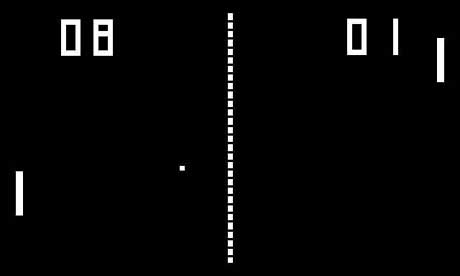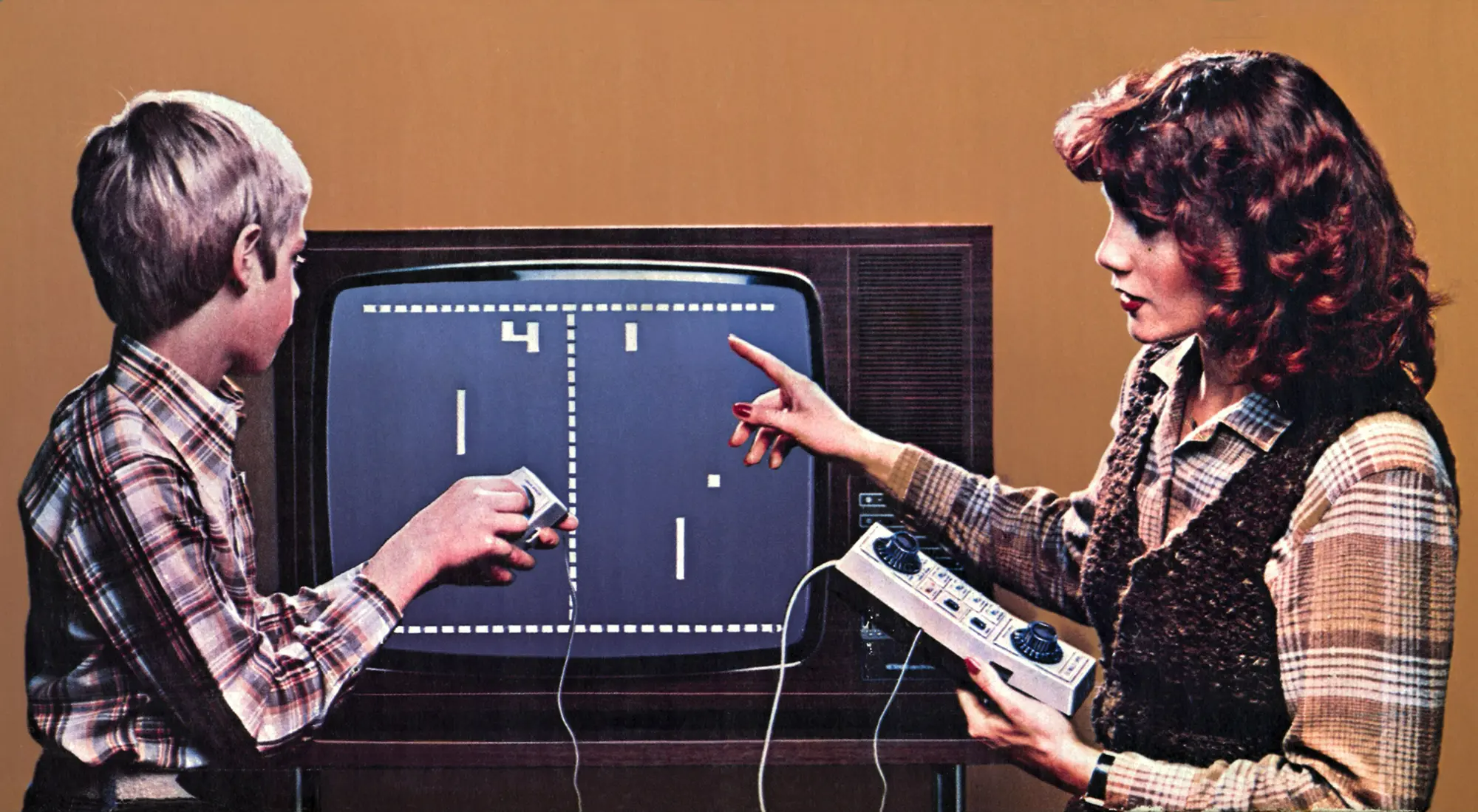Pong wasn’t the first video game, but it was one of the first with sound effects. In the movie biz, they say the final product is 51% music, 49% picture. The sound informs the visual, as the soul possess a body. If you take the music away from E.T., it’s as awkward as family dinner. For video games, the sound is probably an even greater percentage. Imagine how awkward Mario would be if instead of happy coins and bendy jumps, you just heard the sound of your own slow breathing and intrusive thoughts.
Just like real ping-pong, the sound effects of Pong are essential to the game, and they are intuitive. The onomatopoeia “ping pong” implies two tones, the higher-pitched “ping” and the lower “pong.” Clocks have the same pattern with their “tick” and “tock,” doorbells with “ding” and “dong.”
The two tones of tennis are nicely demonstrated in this classic Michael Winslow bit:
Surprisingly, the Pong SFX were an afterthought. According to the game-maker, Allan Alcorn:
So I just tried to make the game better and better, and at the end of the thing he (Nolan Bushnell) said ‘you’ve got to have sound.’ Oh okay, well I’m over budget and three months into this thing and Nolan said ‘I want the roar of a crowd of thousands.’ Cheers, applause. How do you do that with digital circuits? Ones and zeroes? I had no idea, so I went in there that afternoon and in less than an hour poked around and found different tones that already existed in the sync generator, and gated them out and it took half a chip to do that. And I said ‘there’s the sound – if you don’t like it you do it!’ That’s the way it was left, so I love it when people talk about how wonderful and well thought out the sounds are.
Instead of having the two “ping pong” tones for each paddle, there is a distinct “wall” sound and “paddle” sound that are an octave apart to create a realistic table tennis experience. The musical SFX of Pong was crucial to the runaway success of the arcade game. I can’t imagine pinball or slots being popular without the euphonic feedback of bells and whistles.
All the Pong sounds are roughly a quarter-tone flatter than a B, notated with a backwards flat symbol (♭).
Readers of this blog may instantly recognize the ubiquitous utility tone, the so-called “loudest note in the world” in the flat B. This 60 Hz. tone is heard emanating from the American power grid, which you can find everywhere from streetlights to microwaves. It is slightly flatter than a B1, the low B on a 4-string bass guitar. In Pong, the tones are a couple octaves higher with a B3 for the “wall” and “point” sounds, and a B4 for the “paddle.”
Just like the utility tone, the Pong SFX were a product of the hardware. Flat B’s are hard-wired into our electronics. It’s too bad they’re not an equal-tempered B, so that musicians could use them to tune with. Proponents of the 432 Hz. conspiracy will see a great evil lurking in the flatness of Pong, a Satanic meddling in our natural harmony in order to torment humanity’s ears, but it’s probably just the work of tired old engineers who have no time for music and consider SFX to be an afterthought.

I recently realized Pong is a stealth top-down POV game. It’s supposed to be a ping-pong table seen from above, but most people probably see it from the side with the paddles floating in space. It is a rare individual who sees the game as its creator intended.




